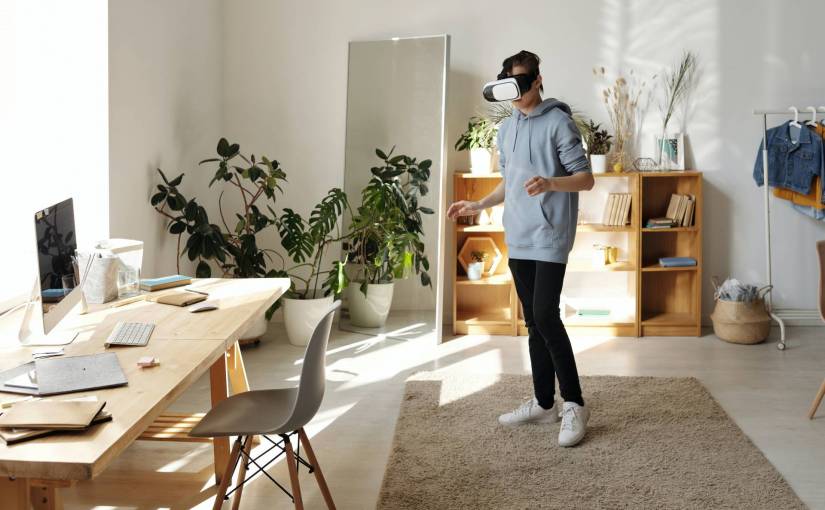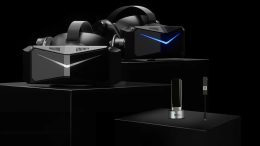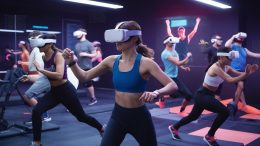Extended reality, commonly referred to as XR, is becoming a prevalent technology many companies use in various industries. XR consists of immersive technologies that have proven their capabilities in the gaming industry, for example. It’s expected that XR headset shipments will increase to 105 million by 2025.
Aside from implementation in the gaming industry, XR also has many applications in the workplace, especially as more companies are looking to undertake a digital transformation. XR can be a complex term to understand. Other technological words, such as augmented reality (AR) and virtual reality (VR), are spoken about frequently — what’s the difference between these realities?
Below is more information about XR, how it’s changing how employees work, some benefits it offers industries, how it has evolved and what to expect for the future.
What is XR?
Essentially, XR is an umbrella term that describes several different yet related technologies, including AR, VR, and mixed reality (MR). These three technologies are considered sub-categories of XR, and they each set out to accomplish different outcomes.
XR describes AR, VR or MR, and a key component of XR is how it takes the human-to-PC screen and modifies it in some way. For example, VR immerses you in a virtual environment, as its name suggests.
XR can also augment or add to a user’s surroundings, known as AR. Think of the game Pokemon Go, which quickly became a global phenomenon in 2016.
When VR and AR converge, that is what’s defined as MR. Again, these technologies can be confusing, but understanding XR and its capabilities are crucial in an ever-changing business landscape. Any device that uses AR, VR, or MR can be referred to as an XR device.
The term is often overused, as it’s become a buzzword for marketing companies and brands. Like the terms “digital” and “natural,” marketers use XR to describe some of their latest products, hoping more consumers will spend on them. However, how can businesses use XR to their advantage?
What Industries Will Benefit From XR?
From health care to manufacturing and everything in between, many industries can leverage XR to reap this advanced technology’s benefits. Below are some examples of other industries that benefit from XR:
- Architecture, construction and engineering
- Military
- Events and conferences
- Retail
- Education
- Automotive
- Entertainment
- Marketing and advertising
- Sports
It seems as though most sectors can greatly benefit from using XR technologies. According to research from PwC, VR and AR tech have the potential to add a whopping $1.5 trillion to the global economy by 2030.
Much of the fuel leading to this economic growth comes down to the tech’s benefits to businesses. XR business benefits are richer and more attractive to executives across the business environment.
A 2019-2020 report from VRX suggests that 98.6% of enterprise users said they would at least consider investing in XR in upcoming years. Because XR will be in high demand sooner rather than later, XR developers and manufacturers will have their work cut out for them.
How XR is Changing the Future of Work and Employment
Before the COVID-19 pandemic, many executives believed that immersive technologies would affect businesses in various industries. As the world continues to adapt to the effects of the pandemic, XR is proving itself as a useful tool companies can and should use to improve their internal operations.
The workplace is becoming increasingly decentralized and highly mobile, meaning employee expectations are also changing. HR professionals across industries and the globe must now cater to these unique employee needs in a remote environment. For example, providing a great employee experience is paramount for companies looking to improve their retention rates.
Below are some ways XR is changing the workplace and how it’s affecting employment across many sectors of the economy.
Remote Work
As an unprecedented number of employees work remotely, either part-time or full-time, employers are looking for ways to improve their business model to meet the needs of their remote employees. XR is an invaluable tool companies can leverage to foster multidimensional collaboration experiences between team members.
Equipping employees with VR or AR head-mounted displays can be a game-changer for remote workers and top management, especially during meetings typically held in person. Examples of XR tools businesses can leverage include The Wild, VRtuoso, vSpatial, and Spatial. XR tech will be a widely used solution for companies with remote workforces.
Employee Training
One major benefit XR offers is simulating real-life situations for employees. Walmart has reaped this benefit, considering how the retail giant implemented VR headsets into its employee training program in 2016. When the pandemic struck, the company relied on these headsets to train employees on reacting to challenging customer situations with kindness.
MR provides an immersive environment for surgeons to practice their techniques without making a single incision on a human body in health care and medicine. Training is a top priority for almost all companies, as making investments in employee training and development can reap big rewards in the long run.
Recruitment
When a business implements XR, it can help garner top talent for recruitment purposes for a few reasons. Younger generations are more likely to work for a company that leverages the newest technologies, and XR is no exception. Gen Z is expected to make up 30% of the workforce by 2030, according to data from the Bureau of Labor Statistics (BLS).
Companies should consider leveraging XR technology to meet the digital needs of the Gen Z population. Consider how HR departments may consider investing in XR to improve their recruitment processes. With a VR headset, candidates can experience a workday at a company without ever visiting the office in person. It would then be a seamless transition after being hired, as employees would feel comfortable using VR during the employee training that follows.
The XR applications listed above are only a few ways this revolutionary technology impacts work and employment across the globe. With the uptick in remote work and the need for better recruitment and training, more companies will consider leveraging XR to support their business goals.
XR’s Role in the Ever-Changing Workplace
Employers that recognize the benefits of XR will likely outperform the competitors in their industry, especially in the next few years. Because investing in XR could include high upfront costs, companies must analyze their needs, budgets, privacy concerns, and other important factors before making any decisions.
Blending physical and digital environments offers benefits to businesses and their employees. A company willing to invest in new technologies will also value employee satisfaction and engagement, which can help attract quality candidates and further the company’s success.
Image Credit: Pexels; Thank you!























